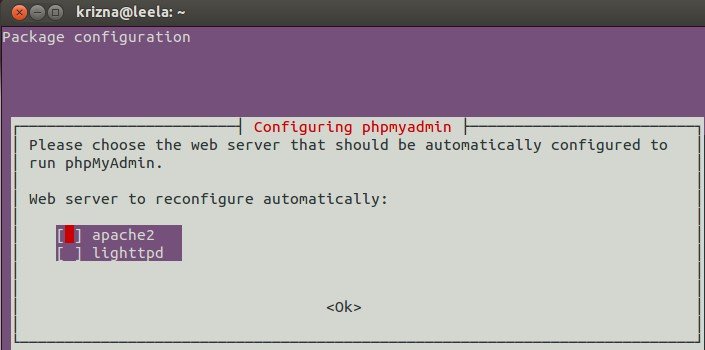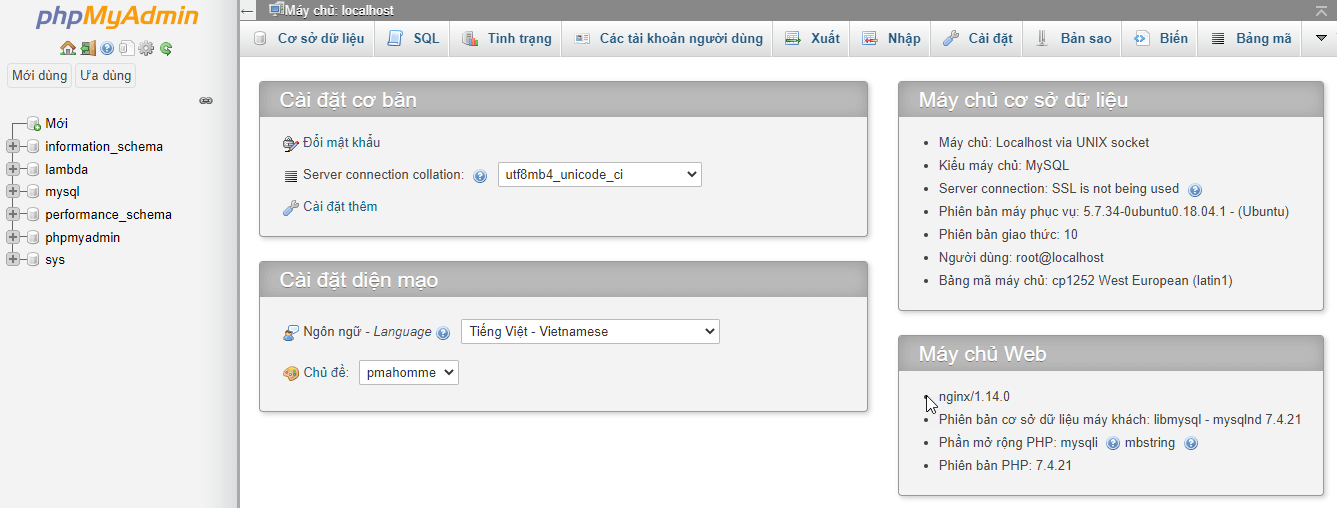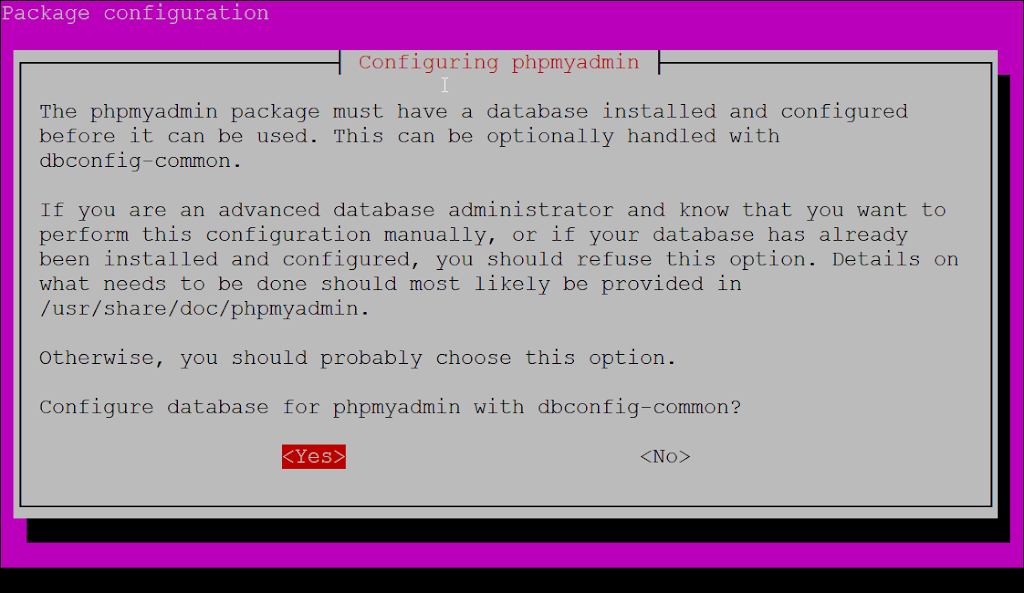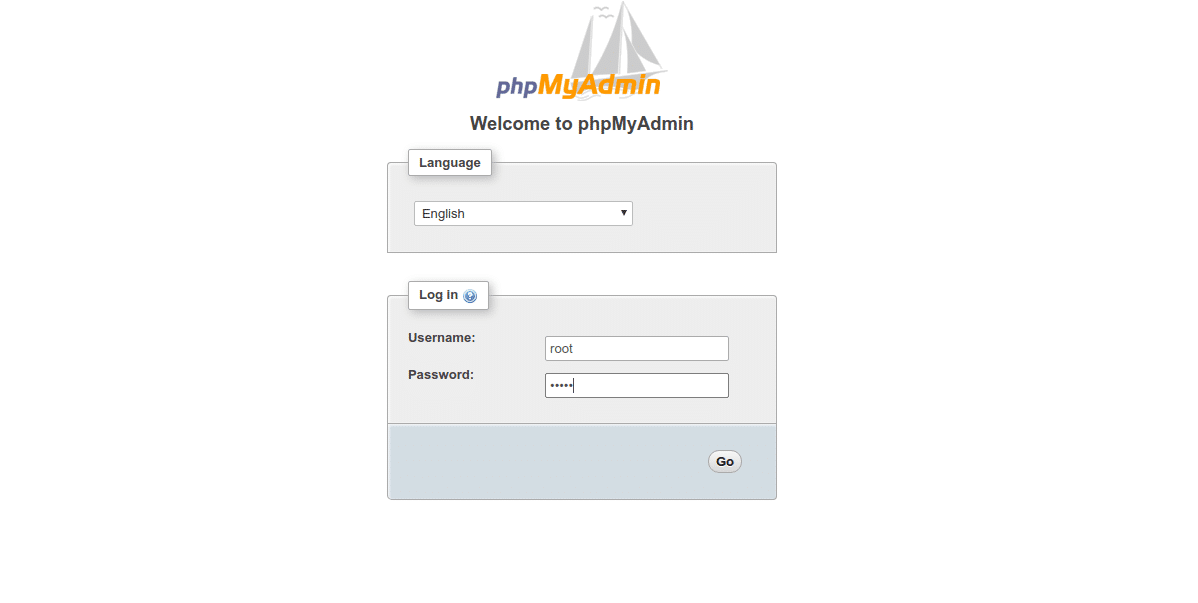

PHPMYADMIN UBUNTU PATH PASSWORD
In the next step provide the site name, username and password for the WordPress Admin and you are good to go. Since I have did not configure mysql password, I left the password option and filled in the rest of the details. Open the browser and navigate to the URL localhost:4000, This should start the WordPress installation. You can choose the port number as per your convenience. Open the terminal and navigate inside the wordpress folder.įire up the inbuilt-php server using the following command php -S localhost:4000

I have placed mine into ~/code directory. Head over to and start download the latest version of WordPress on to your local Ubuntu machine.Įxtract the WordPress zip and put the folder in your desired directory. OR, you can create the database by executing the command line query by logging into your mysql mysql> create DATABASE wordpress You can use any mysql client like (PhpMyAdmin, Dbveaver) to connect to your mysql and create the database using the software.

Create Databaseīefore we start the wordpress installation, we’ll need to create a blank database in the mysql. mysql> FLUSH PRIVILEGES Įxit out of mysql prompt and try logging in again without sudo privilege. sudo mysql -u root -pĮnter your password once prompted, It will login you into mysql consoleĮxecute the following query mysql> ALTER USER IDENTIFIED WITH mysql_native_password BY 'password' īe sure to change the password to your mysql password or leave blank if you haven’t set any password for your mysql.

Next Up, To be able to connect to MySQL to a client (like PhpMyAdmin, DBeaver), we need to be able to connect to mysql without sudo privileges. If you are okay with the blank password for your mysql you can skip this step. You can configure the security options by executing the following command, and following along with the questions asked. Once you have mysql installed, If you are looking to set a strong password for your mysql connection.
PHPMYADMIN UBUNTU PATH INSTALL
Now select the Fallen theme from the Theme dropdown list.Run the following command to install mysql server and php mysql connector sudo apt-get install mysql-server php7.4-mysql To restart the Apache server, enter the following command: If it is already opened, refresh the page. Restart the Apache server and open phpMyAdmin.
PHPMYADMIN UBUNTU PATH ZIP FILE
cd /usr/share/phpmyadmin/themes/Įxtract the zip file into the current directory. Open the Terminal and change the directory to /usr/share/phpmyadmin/themes/. Say you have downloaded the fallen-0.3.zip file. Visit phpMyAdmin Themes site and download the desired theme listed under the version number of your installation. You can see this on the bottom right corner of the phpMyAdmin home page. Follow these steps to change the look and feel of your phpMyAdmin. As a bonus, I also explain here how you can install a custom theme for phpMyAdmin. On the other hand, there are some awesome themes available for phpMyAdmin. I will try my best to figure out the solution.īonus Tip:I hate the default boring theme of phpMyAdmin. If you get any errors while following this article, feel free to comment below. If you get the phpMyAdmin website, you are all set.


 0 kommentar(er)
0 kommentar(er)
